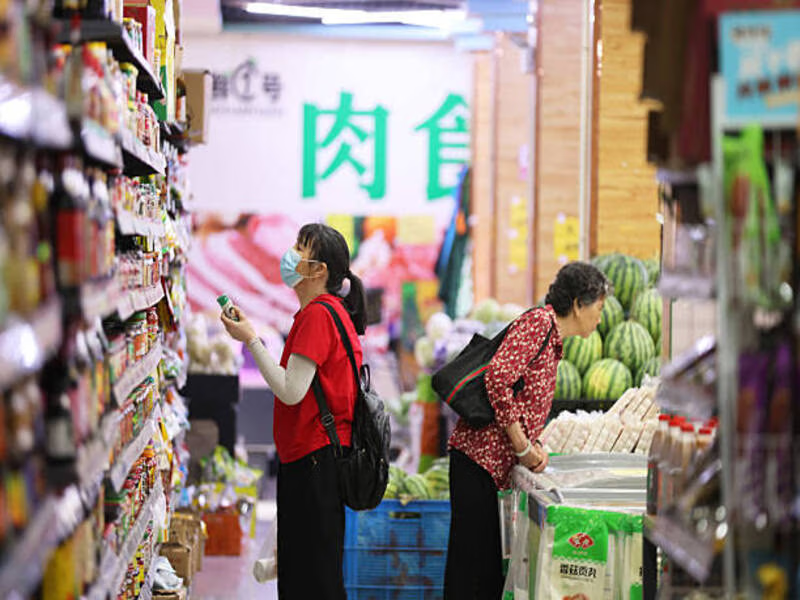Consumer prices in China decreased unexpectedly in September, and producer prices continued to deflate, highlighting how slow domestic demand and trade concerns affect consumer and business confidence.
National Bureau of Statistics data indicated on Wednesday that the consumer price index declined by 0.3 percent compared to the previous year, a steeper drop than had been predicted by economists of a 0.2 percent drop, although it rose by 0.4 percent in August.
Month-on-month price increased to 0.1 percent, which is less than the expected recovery that economists predicted, up to a 0.2 percent surge.
According to data from Wind Information, the core CPI, which adjusts for volatile food and energy prices, increased 1.0 percent a year after an increase, the highest since February 2024.
President and Chief Economist of Pinpoint Asset Management, Zhiwei Zhang, stated that although there was the “positive sign” of improvement in the core CPI, “trade tension returned and growth outlook uncertainty heightened, which is negative for demand recovery.”
He further said, “It is too early to conclude that the deflationary pressure is fading at this stage.”
Official data indicated that the producer price index in China fell by 2.3 percent relative to the previous year, as economists predicted.
However, the deflation came under a second month, and the price drops became smaller than 2.9 percent in August and 3.6 percent in July.
The decline in producer prices has been nearly three years old and manufacturers have suffered because of poor profitability due to poor consumer confidence and production disruption caused by U.S. trade policies.
The slow consumer demand has burdened the Chinese economy, already straining due to a long housing crisis, and U.S. tariffs have exerted pressure on exports.
Although the total exports of China have been on the rise in the current year, the U.S.-bound exports have been declining of double by more than ten percent since April.
NBS spokesperson, Dong Lijun, reported that the fall in CPI due to the “tail effect,” the effect of the high price level last year, by claiming that without the “tail effect,” consumer prices increased by 0.5 percent over a year ago.
Some of the categories that experienced the largest drops included food and energy, where the prices fell by 4.4 percent and 2.7 percent, respectively.
Dong added that the price of industrial consumer goods, especially the jewelry made of gold and platinum, increased 42.1 percent and 33.6 percent following a world gold rush.
Accommodation expenses and air travel expenses dropped 1.5 percent and 1.7 percent in September, respectively, as hotel owners, airline companies, and travel agencies were battered by a fierce price battle as they sought to win holiday business ahead of the eight-day Golden Week holiday, which ran between October 1 and 8.
Managing Director of Ankura Consulting’s GreenPoint Business, Alfredo Montufar-Helu, said that the most recent economic prints acted as “a stark reminder of the significant structural challenges that China must overcome to rebalance its economy,” by citing declining demand, widespread overcapacity, and price wars.
He further added that these are “putting business resilience to the test like never before.”






